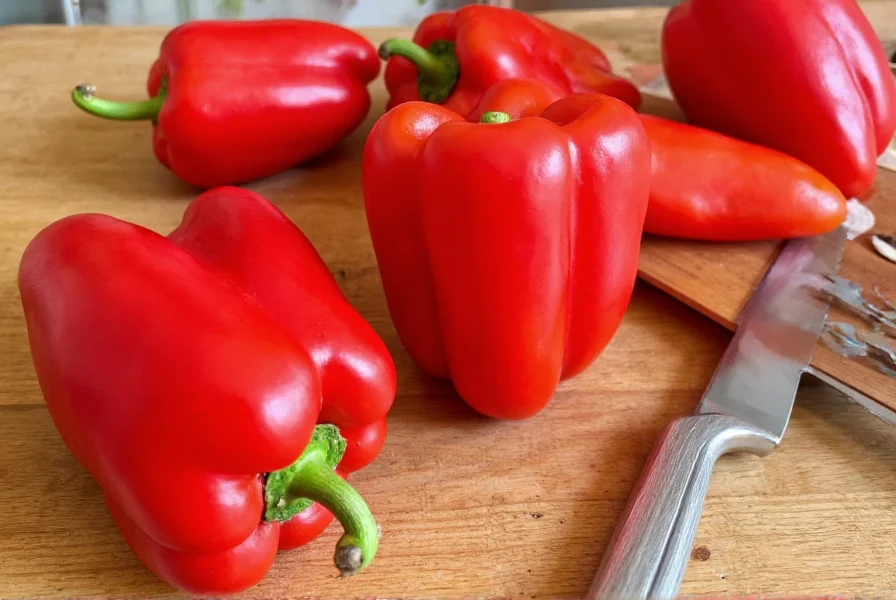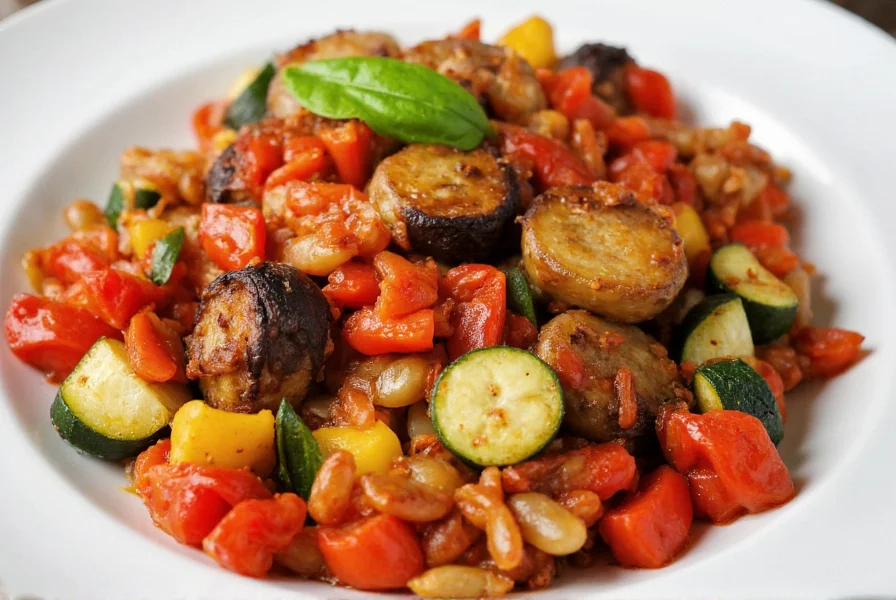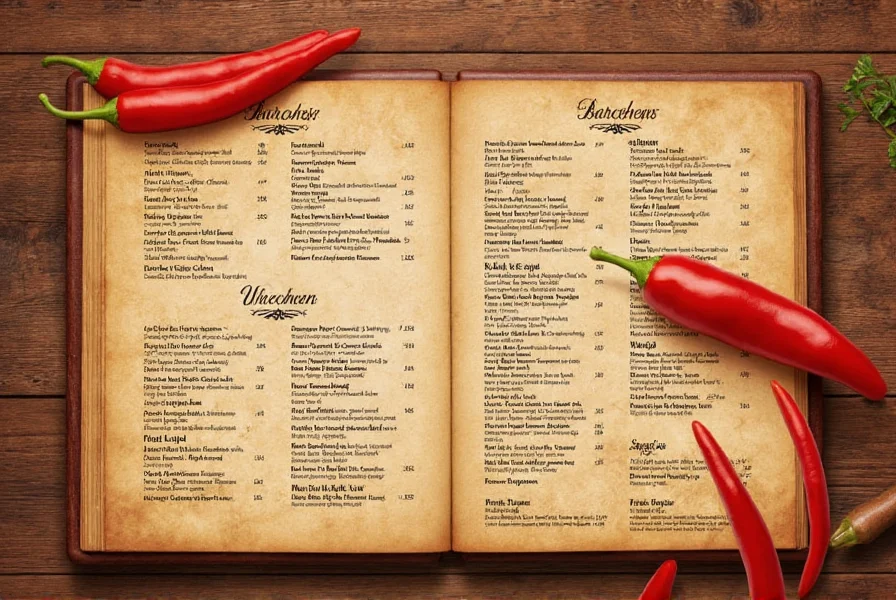Understanding what 'red pepper' means on menus is essential for diners with specific taste preferences or dietary needs. Unlike their green counterparts, red bell peppers have undergone full ripening, developing richer flavors and significantly higher nutrient content. This maturity process transforms both their taste profile and nutritional composition, making them a valuable ingredient in diverse culinary applications.

What Exactly Is 'Red Pepper' on Menus?
When menus list 'red pepper' as an ingredient, they're almost always referring to red bell peppers rather than spicy varieties. Bell peppers change color as they mature: starting green, then progressing through yellow and orange to red. The red variety represents the fully ripened stage, which takes approximately three weeks longer than harvesting them green.
This extended growing period explains why red bell peppers typically cost 20-30% more than green ones in restaurants. The additional time required for full ripening increases production costs while reducing overall yield. Despite the higher price point, many chefs prefer red peppers for their superior sweetness and vibrant color that enhances dish presentation.
Nutritional Advantages of Red Bell Peppers
Red bell peppers significantly outperform their green counterparts nutritionally. A single medium red bell pepper contains approximately:
| Nutrient | Red Bell Pepper | Green Bell Pepper |
|---|---|---|
| Vitamin C | 152mg (253% DV) | 80mg (133% DV) |
| Vitamin A | 9500 IU (190% DV) | 3131 IU (63% DV) |
| Vitamin B6 | 0.5mg (29% DV) | 0.2mg (12% DV) |
| Dietary Fiber | 2.5g | 2.0g |
The dramatic increase in carotenoids during ripening gives red peppers their characteristic color while boosting antioxidant content. These nutritional advantages make red bell peppers a preferred choice for health-conscious restaurants and menu developers focusing on nutrient-dense offerings.
Culinary Applications Across Global Cuisines
Chefs worldwide incorporate red bell peppers into diverse menu items due to their versatility and visual appeal. Mediterranean restaurants frequently feature them in roasted vegetable platters and ratatouille, while Spanish cuisine uses them prominently in pimientos de padrón and escalivada. In American diners, you'll often find red peppers adding color and sweetness to fajitas and stuffed pepper dishes.
The natural sweetness of red bell peppers makes them particularly valuable in dishes where chefs want to reduce added sugars. Many contemporary restaurants leverage this quality in vegetarian and vegan menu items, where red peppers provide both flavor complexity and visual appeal without animal products.

Selecting Quality Red Pepper Menu Items
When reviewing menus that feature red peppers, certain descriptors indicate higher quality preparations. Terms like 'roasted,' 'charred,' or 'fire-roasted' suggest the kitchen has taken time to develop deeper flavors through proper cooking techniques. Menus specifying 'locally sourced' or 'seasonal' red peppers typically indicate fresher ingredients with better flavor profiles.
Be cautious of menu items that simply list 'peppers' without specifying color or variety, as these often use less expensive green peppers that haven't fully ripened. Restaurants committed to quality ingredients will typically specify 'red bell peppers' to distinguish them from spicy varieties or less mature peppers.
Cooking Techniques That Maximize Red Pepper Flavor
Professional kitchens employ several techniques to enhance red bell peppers' natural sweetness. Roasting over open flame caramelizes natural sugars while adding subtle smokiness. Sautéing with aromatics like garlic and onions builds complex flavor foundations for sauces and stews. Some high-end restaurants even use sous-vide preparation to preserve maximum nutrient content while achieving perfect texture.
When dining out, menu items featuring red peppers in multiple preparations often indicate thoughtful dish development. For example, a dish might include both roasted red peppers for sweetness and raw diced peppers for fresh crunch, creating textural contrast and layered flavor experiences.
Common Menu Items Featuring Red Bell Peppers
Red bell peppers appear across various menu sections in quality restaurants:
- Appetizers: Roasted red pepper hummus, stuffed peppers, pepper tapenade
- Main Courses: Red pepper pesto pasta, stuffed chicken breast with red peppers, shrimp skewers with bell peppers
- Sides: Ratatouille, roasted vegetable medley, pepper relish
- Breakfast: Red pepper and goat cheese omelets, pepper hash
Increasingly, health-focused restaurants highlight red peppers in 'power bowls' and grain salads, leveraging their visual appeal and nutritional benefits to create Instagram-worthy dishes that also deliver substantial health benefits.
Frequently Asked Questions
Is red pepper on menus the same as chili pepper?
No, 'red pepper' on most menus refers specifically to red bell peppers, which are sweet and non-spicy. Spicy peppers like chili peppers are typically identified by their specific variety names such as jalapeño, cayenne, or habanero. If a menu intends to indicate heat, it will usually specify 'hot red peppers' or name the spicy variety.
Why do some restaurants charge more for dishes with red peppers?
Red bell peppers cost more because they require additional growing time to reach full ripeness compared to green peppers. This extended maturation period reduces overall yield while increasing production costs. The sweeter flavor and superior nutritional profile justify the higher price point for quality-conscious restaurants.
How can I tell if a restaurant uses quality red peppers in their dishes?
Quality restaurants typically describe their red pepper preparations specifically - terms like 'roasted,' 'fire-roasted,' or 'charred' indicate proper cooking techniques. Menus that specify 'locally sourced' or 'seasonal' red peppers generally use fresher ingredients. Dishes where red peppers appear as a featured ingredient rather than just a minor component often indicate better quality usage.
Are red peppers on menus always bell peppers?
In 95% of restaurant menu contexts, 'red pepper' refers to red bell peppers. However, in specific regional cuisines like Hungarian or Spanish, 'red pepper' might occasionally refer to paprika or pimientos. When in doubt, don't hesitate to ask your server for clarification about which variety the kitchen uses in a particular dish.
What's the best way to enjoy red peppers when dining out?
For optimal flavor, choose menu items that feature roasted or grilled red peppers, as these preparations enhance their natural sweetness. Mediterranean and Spanish dishes often showcase red peppers particularly well. If you're watching your sodium intake, request that sauces containing red peppers be served on the side, as some preparations may include added salt during cooking.











 浙公网安备
33010002000092号
浙公网安备
33010002000092号 浙B2-20120091-4
浙B2-20120091-4